Chevrolet In Duel With Volkswagen For The Heart of China
When one thinks of General Motors’ relationship with China, Buick flashes into the mind like a brake light in the Beijing smog. Sometimes, Cadillac comes up, as well. However, with Volkswagen preparing to slingshot past them in a manner akin to Danica Patrick being flung toward the front of the pack with help from Tony Stewart, CEO Dan Akerson is planning to aggressively push Chevrolet through the choking air, and into as many Chinese garages as he can find.
Beyond The BRICs
Emerging markets have been a big theme at TTAC for the past few years, with our coverage going beyond the cursory articles on automotive developments in the BRIC countries. Our articles on places like North Africa and Indonesia aren’t always the most popular, but we keep an eye on them for a very important reason. These countries are the final frontier for growth in the automotive sector.
Ford's Transit Taxi To Connect Passengers Worldwide
With a few successes under Ford’s strap with the American buckle, the Blue Oval made be known its aspirations to go for the world championship belt in ferrying drunk revelers and harried air travelers with their Transit Connect Taxi in its debut in Hong Kong.
The 1973 Oil Crisis: 40 Years Later
Forty years ago this month, the Organization of Arab Petroleum Exporting Countries (consisting of OPEC’s Arab members plus Egypt, Syria and Tunisia) began an oil embargo that would last through March of 1974.
A Vision Of The Future: A Day In The Life Of Bob Jones
The following article is long. Some of you will decry it as fiction outside of the space this website normally reserves for stories and others of you will lament its presence on what is supposed to be an automotive news website. Maybe you are right, but the truth is that I read a lot and my mind is constantly pulling at a million disparate threads of information and tying them together in ways that make unusual patterns. Some of these things have coalesced this week into the following piece and so I have offered it to the editors to see if they think it has a place on our esteemed pages. If you are seeing it, then they have given it the green light and all I can do is ask you to indulge me.
Articles about the future used to show up in the newspapers and the magazines with surprising regularity when I was a kid. They were great reading and were almost always accompanied by large, full color illustrations by noted artists like Syd Mead that fleshed out the words out surprising detail. In virtually every case, despite much of the turmoil going on in our country in the 1970s, those articles painted a picture of a better, brighter future. Now more than a third of the way through the second decade of the 21st century, we all know that things didn’t turn out quite the way those old articles imagined but that doesn’t mean that we should stop trying to predict what is coming. I can’t help but think that a better tomorrow really is right around the corner.
You Can Buy A New Stingray Right Now For Only $7,000!
Production on the all new seventh generation 2014 Corvette Stingray has begun, though they haven’t officially gone on sale yet while the inventory pipeline fills. It’s the first time in decades that the Stingray name has been used by the Corvette. However, it turns out that you can buy a brand new Stingray right now, and for only about $7,000. There’s just one catch. It’s not a Corvette, made by Chevy or even sold in the United States.
As Korean Labor Costs Rise GM Builds Capacity in China, Moves R&D Work On Compacts To Detroit
Following labor unrest and increasing costs at their operations in South Korea, General Motors has begun to reevaluate GM Korea’s role in the giant automaker’s production plans. Currently GM Korea, formerly Daewoo, builds about 20% of GM’s global production. The already announced shifting of production of Opel’s Mokka small crossover to the Zaragoza facility in Spain starting in the second half of 2014 may portend other changes in GM Korea’s role. Both foreign and domestic Korean automakers have expressed concern over rapidly rising wages in that country. The strong Korean currency, the won, coupled with those rising labor costs have made Korea one of the more expensive places for GM to build cars.
GM Axes Global Powertrain Chief & Several Employees Over India Emissions Testing "Ringer Engines" Scandal
Tavera SUVs at GM India assembly plant
Automotive News is reporting that Sam Winegarden, GM’s vice president for global engine engineering, the company’s highest ranking powertrain executive, was fired this week along with about 10 other GM Powertrain employees in the U.S. and India, over cheating in GM’s emissions testing at its Indian subsidiary.
GM Q2 Profits: $1.2 Billion, Down Due To New Pickup Launch Costs
General Motors said that costs associated with the launch of their redesigned pickup trucks and weaker results in Asia (except for China) lowered net income for the second fiscal quarter of 2013 by 19% from last year, to $1.2 billion.
Strong U.S, China Results Push GM's First Half Global Sales Up 4%
Though handicapped by continued sliding sales in the overall European market, GM announced today that global sales for the first 6 months of 2013 were up 4% over the comparable period last year.
America's Hot Export Article: "Import" Cars
Many people don’t realize that most of the “import” cars bought and sold in America no longer roll off a boat, but off an assembly line somewhere in the American heartland. Or at least in the North American heartland. It comes as an even bigger surprise that these cars are one of America’s most successful export products, going from American ports to many countries in the world – where people often are likewise ignorant of the car’s American origin.
Fifty Years of the Trans-Canada Highway
Currently, two of TTAC’s regular writers are lumberjacks dirty communists Canadians: myself and Derek Kreindler. Today we celebrate our country’s one hundred and forty fifth year of being a sort of chillier, politer version of Australia.
I love Canada. It’s really… big. It’s big. Sure we discovered insulin and invented the pacemaker and created that game that’s a bit like hockey except there’s some baskets and a big orange thingy that you bounce around (can’t remember the name, tip of the tongue), but really, all true sons and daughters of the North are proud of one thing above all else: Canada’s the biggest country in the world. Apart from Russia, of course.
GM Reports $1b Q1 Profit, Still Seeking "Competitive Levels Of Profitability"
Once upon a time, GM’s North American operations spewed red ink across the firm’s balance sheet, with the whole mess kept afloat by relatively strong overseas operations. Now GM makes most of its money at home while its international divisions limp along. No, really: in its just-released Q1 financial report, GM reveals that some $1.7b of its $2.2b global EBIT came from its once-troubled home markets. What a difference a bailout makes!
Someday, GM Will Own the Streets of Hanoi!
During my visit to Vietnam last month, I photographed many Honda Super Cubs, but I always kept one eye open for other interesting vehicles. I spotted a few Toyota Crown Royal Saloons, which was cool, but catching a Geo Chevrolet Tracker at a Hanoi intersection was one of the weirder sightings. Studying the photograph later, I realized that three of the four (non-two-wheeled) vehicles in the frame were GM products that show the breadth of The General’s Asian empire.
Anti-Iran Pressure Group Takes Hyundai Off Axis Of Evil Black List, Keeps GM And Chrysler On
Car companies severing ties with Iran are making headlines. After GM’s new partner PSA decided to stop sending parts to Iran, Hyundai “has quietly ended its business dealings with Iran, where it had extensive operations,” says the New York Times. The Times chalks this up as a win for “United Against Nuclear Iran, an American group that has advocated economic sanctions.” UANI keeps a list of companies that still do business with Iran, it also lists companies that have withdrawn from doing so. Hyundai has received a check mark in the “withdrawn” list.
Detroit is looking nervously at that list. Let’s have a look as well.
Blind Spot: Catching Up With Chrysler
With the government still waiting to see how much it will get out of its equity in General Motors, The General seems to be attracting more of the media commentary than Chrysler these days. And not without good reason: GM saw the greatest drop in market share last month of any Detroit automaker, its government-hyped Volt is flopping, Opel continues to be an open sore and it can’t help but flaunt its cluelessness about youth marketing. But interest in GM’s shortcomings seems to be driven by little more than election-year political implications, which Chrysler was able to avoid by borrowing cash and misleadingly claiming to have squared up with the American taxpayer. After all, Chrysler is facing just as many challenges as GM, if not more. And despite having formally closed the bailout chapter of its history, Chrysler’s performance still bears on the decision to rescue America’s weakest major automaker.
Nissan Invests $2 Billion Into Mexican Plant
While Honda and Mazda are just getting their respective footholds in Mexico (the two automakers are opening up respective assembly plants in Mexico), Nissan has had a long presence south of the border, building cars at its Augascalientes, Mexico plant for decades.
NAIAS Preview: Ford Serves Up Some Global Fusion
Ever since the ill-fated Contour experiment, Ford has maintained a strict separation in its global midsized offerings: Fusion for the Americas and Mondeo for Europe (let’s ignore, for the moment, Australia’s Falcon as the doomed atavism it is). But under the global “One Ford” strategy, a fusion (ahem) of The Blue Oval’s midsized offerings was inevitable, and Ford has signaled for some time that the Fusion and Mondeo are on the verge of becoming one. And here, courtesy of the autoforum.cz, is the first leaked image of Ford’s unified, world-wide midsized contender: though the Fusion and Mondeo names will continue to be used in their respective markets, this car will carry both badges. But are we looking at a revolution in the oft-troubled “world car” game, or a repeat of the Contour’s compromises? Only time will tell…
Dodge Brand Phase-Out Watch: There Will Be No Dodge Viper
Once upon a time, the Dodge brand was brimming with pride. In the mid-to-late 1990s, Dodge had it all: affordable compacts, big front-drive cruisers, the hottest trucks on the market, and of course, the Viper. And when the times were good, all of those part melded into one brash, exciting, quintessentially American brand. From Neons and Intrepids, from Rams to Vipers, Dodge could do it all, as long as “it all” included a healthy dash of in-your-face attitude. But over the years, as Dodge’s shining moment faded into memory, the brand has managed to become both less viscerally appealing and less well-rounded. And when Fiat’s leadership stripped Dodge of the Ram “brand,” shucked its designs of their truckish cues, and repositioned Dodge as a more “youthful” and “refined” sporting brand, it seemed as if Dodge as we knew it was dying. Since hearing of Fiat’s plans to bring Alfa stateside, and with Dodge appearing to have lost out in brand alignment product battles, we’ve been wondering for some time now if Dodge isn’t headed out to pasture. Now there’s even more evidence that Dodge is being hollowed out en route to replacement with Alfa, as Automotive News [sub] reports
Absent from the redesigned SRT Viper will be the name Dodge… Viper has been linked to Dodge since the Dodge Viper RT/10 concept debuted in 1989. The first Dodge Viper SRT-10 went on sale in 1992, and over the years 28,056 Vipers were produced, according to Chrysler.
Not any more. Essentially, SRT becomes a brand with its own vehicle, in this case the SRT Viper.
That’s right, Dodge won’t have a Viper or a Ram (or, more prosaically, an Avenger or Caravan). Some might argue that, absent these components, the Dodge name doesn’t mean much of anything anymore. Certainly it doesn’t seem that Dodge can have a particularly bright future without any links to its last moment of glory.
Lotus Investors: Sell! Sell! Sell!
Lotus is one of those brands that every auto enthusiast loved to lionize, despite (or possibly because of) the fact that it hasn’t made a profit for its owner, Proton, in 15 years. But now things are changing. Lotus itself is in the midst of a makeover, seeking to transition from niche sports- and track-car company to a Ferrari and Porsche-rivaling aspirational brand. Meanwhile, back in Malaysia, its owner, Proton, is undergoing a few changes itself. Having been founded as a state-backed business, Proton may soon be privatized, reports Bloomberg. And as a result, Protons private investors could push for a quick divestment of the firm’s Lotus holdings. One such investor, Gan Eng Peng of HwangDBS Investment Management, tells Bloomberg
It will make sense for them to sell it. Proton and Lotus are not a good fit. They are in different market segments, both in terms of geography and product.
North Korea Diary: All Roads Lead To Pyongyang
The familiar wail of a police siren cuts through the chilly early winter morning air rudely snapping me out of a cold-induced slumber. Our minibus slows to a crawl as our minder winds down the window to wave his papers at a bunch of stern-faced traffic policemen.
The officer that checked the papers gave the 17 university students on the bus a once-over before waving to his partner to turn off the siren. It seems that a Toyota Coaster minibus filled with students is a rare sight in this part of the world.
Then I caught sight of a little round badge bearing the smiling face of the “Eternal President” Kim Il-Sung on the officer’s coat.
“Toto, I’ve a feeling we’re not in Kansas anymore,” the voice in my head whispered.
Chinese Cars Have Arrived, As Honda Imports Fits From The Middle Kingdom
One question that Bertel and I find ourselves returning to again and again in our regular conversations is “what will be the first Chinese-made car sold in North America?” We’ve agreed for some time that the groundbreaking first Chinese-made import would come from an established non-Chinese brand, rather than one of the many newer Chinese brands, but our usual suspects typically ranged from GM to Volvo (EV maker Coda builds what are essentially “knock down” Chinese made-cars, but technically they qualify as US assembled, as does Wheego). I don’t think the name “Honda” ever came up in these discussions, but sure enough, the NY Times reports
the Japanese automaker Honda is crossing the threshold by importing subcompact cars into Canada from one of its plants in China. This month, Honda Canada began receiving its smallest model, the Fit, from China instead of Japan, as part of a strategy to produce more vehicles outside its home country.
The decision allows Honda to eke out higher profit in a segment of the auto market where margins are extremely thin, especially since the high value of the yen cuts into all Japanese automakers’ overseas operations.
“The yen has been getting stronger and stronger,” Jerry Chenkin, executive vice president of Honda Canada, said on Tuesday.
Of course, Honda has yet to bring a Chinese-made Fit to the US, where antipathy towards Chinese products is greater and automotive diversity is lesser than in the Great White North. Also, the importation of Chinese Fits is seen as a temporary response to the high Yen, while Honda builds a new plant in Mexico for Fit production, scheduled to open in 2014. Still, this is a significant development, presaging the inevitable importation to the US of Chinese-built vehicles.
Trade War Watch 20: China Slaps Tariffs On American-Built Large Cars And SUVs
When we last checked in on t he low-level trade war between China and the US, which was sparked by President Obama’s 35% tariff on Chinese tires, the Chinese government had ruled that American large cars and SUVs were being “dumped” on the Chinese market, but wasn’t doing anything about it. Now, Reuters reports that China is doing something about it, namely saying that it plans to impose tariffs of up to 22% on imports of American-built large cars and SUVs. And the “up to” is key: GM and Chrysler are being hit hardest ( unsurprisingly), while American-made BMW, Mercedes and Acuras are receiving considerably lower tariffs.
Still, China only imports $1.1b worth of vehicles in this category, whereas the US imported some $1.8b worth of Chinese tires prior to the Obama tariffs. Like most of the news around Chinese-American relations, this is more saber-rattling than substance. But with economic conditions still shaky in the US, and a Presidential election getting into full swing, small spats can escalate into larger confrontations. And with China surpassing the US as the largest market for cars in the world, it’s probably no coincidence that this simmering conflict largely involves cars and car-related products.
UAW Backs Off Transplant Organizing Goal, Attacks Hyundai
At the beginning of this year, the United Auto Workers pledged that it would launch a campaign to organize the foreign-owned, non-union “transplant” factories in the US, threatening to tar uncooperative automakers as “human right abusers.” The campaign initially lost steam, but the UAW stuck to its pledge, re-iterating on several occasions that it would organize “at least one” transplant factory by the end of 2011. With one month left to accomplish that goal and no signs of progress in sight, the UAW has officially called off that goal. In fact, the UAW now hopes to simply pick an automaker to target by the end of 2011. Spokeswoman Michelle Martin tells Bloomberg
At this point, our hope is to make a decision about who we’re going to target by the end of the year. But obviously, we won’t have the organizing campaign completed by the end of the year.
This is not too surprising, considering the UAW announced last week that it would be focusing on dealership pickets initially rather than factory organizing. And sure enough, the first dealership picket has begun, targeting Hyundai dealerships. And yet, says Martin
This has nothing to do with the domestic organizing campaign. Hyundai is not the target.
Huh? If the UAW is not committing to organizing Hyundai’s assembly workers, why picket Hyundai dealerships?
Chrysler: Imported From Detroit. I Mean Turin. I Mean…
Chrysler’s latest “Imported From Detroit” ad, which seems to be trying to convince itself to “see it through,” continues the brand’s recent tradition of associating itself (perhaps a bit too closely) with the trials and tribulations of the city of Detroit. That approach, like the 300 itself, might play well in parts of the US market… but Chrysler needs its cars (and ads) to do more. Imagine how this ad might go over in Berlin or Milan, and you might catch a glimpse of Chrysler’s larger challenge: making its cars relevant globally as both Chryslers and Lancias.
Mitsubishi: It's A Mundane, Mundane, Mundane World (Car)
What's Wrong With This Picture: No Country For Old-School SUVs Edition
These 2013 Hyundai Genesis Pictures Are As Real As They Come
The last time we posted a photo of the forthcoming Genesis Coupe facelift, we soon found that Hyundai Motor America staff were quietly informing other blogs that it was a photoshopped fake. I inserted a warning into the post, cursed myself for having been had, and moved on. So, how do I know these pictures are real? Probably because they come from the URL blog.hyundai.com (the leaked (non-press) shots are from Gencoupe.com, and don’t look as though they could possibly be faked). It turns out that Hyundai is showing off the new coupe to either drift fans or ice skating aficionados (Google Translate is hilariously unhelpful with Korean) this Saturday at something called the Chonnam National Yeongam F1 Speed Festival. Hyundai will “officially” show the car to the American market a week later at the LA Auto Show… at the earliest. More likely, Hyundai will continue to pretend that this car doesn’t exist until January, at the Detroit show. And they’d have gotten away with it too, if it weren’t for those meddling internets!
[H/T: Our man in Korea, Walter Foreman]
You Know You Have Been In Japan For Too Long, If ...
I was still a little shook-up from the treatment administered by Matsuda-san, and it must have shown. “Why don’t you get some fresh air?” was the polite Japanese suggestion.
The Fiat-Chrysler Strategy: Now Featuring Jeep And Alfa
It’s becoming increasingly clear as time goes on that the Chrysler five year plan promulgated in November 2009 was merely a stopgap strategy aimed at stabilizing the then-recently-acquired firm while CEO Sergio Marchionne plotted a strategic course globally. Now, with news that Alfa is going to be re-launched with the US as its major focus ( possibly replacing Dodge), we’re getting a better and better picture of where the Sergio Show is headed with his transatlantic alliance. In an interview with Automotive News Europe [sub], Marchionne gives the latest snapshot
In his vision, Alfa Romeo and Jeep both have the DNA and the rich history capable to make them the alliance’s two global brands. “We need to continue to globalize Jeep and Alfa, so the development of architectures and engines that are designed to support these two brands is crucial, and everything else becomes almost secondary,” he said.
Chrysler clearly won’t be a global brand, as its products are rebadged as Lancias in Italy. Fiat will offer full lineups in Europe and South America, but only the Fiat 500 will be a truly global brand, in a role Marchionne compares to BMW’s MINI. Dodge doesn’t even rate a mention in this interview, which can only be interpreted as more evidence that it will be lucky to survive at all.
European Market Volt Gets EV-Only "Hold Mode," Should The US Version?
In an era of increasingly-globalized automobiles, the “market-to-market adjustments” which modify a global vehicle to “local tastes” are becoming an interesting source of insight into a company’s perspective. And Chevrolet Europe boss Wayne Brannon revealed one of the more significant adjustments in recent memory (because nobody reads the press releases), when he told Automotive News [sub]’s Dave Guilford
I just switch it into extended range mode, and I drive on fuel until I get there. When I drive in the little villages and towns, I drive in electric mode.
The reason it was important here is we have cities — like London — where you don’t have to pay a congestion charge if you’re running purely on battery. You save the battery for when you need it.
Gosh, that’s an interesting idea. It would certainly help clear up some of the confusion in the marketplace about why the Chevy Volt is the way it is. Imagine the tagline: “Gas or electric? You decide.” So, how about it, GM? Will that feature come to the US?
From Akerson To Ghosn, The Mood Of Industry Leaders Darkens
Industry leaders, usually known for their unfatiguing optimism, are more and more taking a cautious stance. GM’s CEO Dan Akerson predicts flat industrywide U.S. auto sales in 2012, while his colleague Carlos Ghosn, chief of Renault and Nissan, has feelings of “very great uncertainty” when he looks toward 2012.
Steel Industry: Replace Tailpipe Emissions Testing With Lifecycle Analysis
Light-weight materials such as carbon-fiber, aluminum and magnesium are widely touted as key components of the drive towards greater fuel economy. Which explains why the automotive steel supplier industry is suddenly calling for an end to tailpipe emissions testing and a switch to the more holistic life cycle analysis testing. According to a press release from WorldAutoSteel, an industry group, the production of steel alternatives can create up to 20 times the carbon emissions of steel.
Chevrolet Global Colorado Debuts In Thailand
Editor’s note: GM has officially confirmed what the UAW already let slip: Chevy’s new midsized Colorado pickup will be built at the Wentzville, MO plant and sold in the US. More details on that decision are forthcoming, but in the meantime, here’s Edd Ellison’s report from the global launch of the Colorado in Bangkok, Thailand.
Chevrolet has launched its new-generation Colorado in Thailand where it will be built and exported to 60 global markets. In true GM style, the ceremony was lavish – a cluster of truck ploughed their way through a large field of crops planted in a Bangkok exhibition hall watched by the media, dealers and VIPs packed into several grandstands – and the message was just as upbeat, the automaker feeling it has a product that can compete in the crowded mid-size segment.
Sibling Rivalry Watch: Is Kia Outshining Hyundai?
Hyundai and Kia are technically separate companies, with Hyundai owning less than 50% of its junior partner. But as the two major divisions of the Hyundai-Kia Motor Group, the two firms share resources and align their strategies through carefully-maintained relationships in the classic Korean chaebol (conglomerate) fashion. Hyundai has long been the senior partner in the relationship, getting the newest technologies and the most expensive new cars. But in both Korea and abroad, Kia is beginning to catch up with its big brother, raising questions about the future shape of its delicate relationship. Together, Hyundai and Kia enjoy a dominant position in Korea, earning 45.2% and 33.2% of the overall Korean market in 2010 (including commercial vehicles). But if you just look at sedans and SUVs, the Korea Herald reports that their 2010 market share numbers are much closer: 39.6% and 35/7% respectively, and converging
Hyundai Motor Group is focusing on the possibility that Kia will catch up with Hyundai within one year in terms of monthly market share ― for sales of sedans and sport utility vehicles ― domestically for the first time…
The gap for sales of sedans and SUVs have continued to narrow ― 22.9 percentage points in 2007, 17 percentage points in 2008, 15.4 percentage points in 2009 and 3.9 percentage points in 2010.
And this fresh-brewed sibling rivalry isn’t just about Korea: around the world, Kia is catching up. And this shifting relationship is shaking things up at the highest levels of the group’s leadership.
As The World Shrinks: 2013 Chevy Malibu Debuts In Korea
Like the Chevrolet Cruze before it, the new Malibu was supposed to debut in Korea (probably as a Daewoo) a good year before it arrived in the US. But a few things have changed in GM’s relationship with its Korean unit, no longer called Daewoo but GM Korea. The Daewoo brand is gone, for one, replaced by the Chevrolet bowtie. And with Bob Lutz’s blessing, GM CEO Dan Akerson pulled forward the US Malibu launch by some six months, which means we should be getting it in the first quarter next year.
And though the possibility of a simultaneous global launch is still out of reach (video of the Korean launch can be found here), this model is a key element in GM’s globalizing effort, replacing not only the US Malibu, but also the Daewoo Tosca (a.k.a Chevy/Holden Epica). We knew GM has way too many architectures across its global lineup, but were you aware that the Tosca/Epica had optional Porsche-designed transverse straight-six engines, in 2.0 and 2.5-liter configurations? Neither did I. But with the new Malibu, it’s straight-up-and-down GM: the Epsilon II platform, with 2.0 or 2.4 Ecotec engines (in Korea, anyway… an all-new 2.5-liter engine is on tap fro the US). We may be quick with the Daewoo jokes, but this new Malibu is doubtless making the automotive world a much smaller, more homogenous place. Welcome to the future… [Hat Tip to our man in Korea, Walter Foreman}
Sergio Marchionne: International Union-Buster
Considering the United Auto Workers’ VEBA fund is still Chrysler’s second-largest shareholder, CEO Sergio Marchionne is taking an amazingly hard line with the union. With a GM deal long done, and Ford’s deal moving towards approval, Chrysler is the last automaker on the UAW’s to-do list… and Marchionne tells Bloomberg he’s up for a fight if necessary, saying
I sincerely hope that we don’t have to get to arbitration. But if necessary, Chrysler will go there. We and GM are completely different
Marchionne is reportedly pushing the UAW for a number of tough concessions, including a mere $3,500 signing bonus (compared to $5k at GM and a reported $6k at Ford), and the elimination of a planned 2015 cap on entry-level “Tier Two” workers (at 25%). And though both of these are tough asks, he’s using UAW boss Bob King’s concept of union internationalism as a cudgel against the UAW, playing Italian unions off their American counterparts. And as a result, he could earn Chrysler a favored place among America’s unionized autoworkers.
"In Many Ways, the Marriage Between the Indian Middle Class and the Automobile Culture Has Been Disastrous."
The NYT’s opinion page has a provocative piece by Siddhartha Deb today. It explores the role that automobiles play in the class dynamics of a modernizing India. Deb writes
Until the mid-1990s, cars had been mainly available in two models in India: the unglamorous, onion-shaped, sturdy Ambassador and the more aerodynamic Maruti 800. Both were produced by state-run companies (though the latter had a partnership with the Japanese company Suzuki). But when India began to open its markets, a wide range of cars became available, just as rising middle-class incomes and cheap consumer credit made buying such cars feasible.
In many ways, the marriage between the Indian middle class and the automobile culture has been disastrous. Roads remain awful, drivers continue to be erratic, and traffic in cities like Delhi and Bangalore is worse than ever. And yet the car has become deeply enmeshed with upward mobility, while also complicating that mobility. In the India of the Ambassador and the Maruti, the distinction was largely between those who owned cars and those who did not. In the India of Ford, Fiat, Hyundai and Mahindra — where there is even a very cheap indigenous model called the Tata Nano — distinctions are parsed in terms of the model one owns.
Drom the Bollywood producer’s suit-matched Bentley Continental to a struggling middle class couple’s divorce over the wife’s aspirations to a red Mitsubishi Pajero, Deb documents the cars, and other forms of transportation, which help define the emerging class order in India. It’s a brief but intriguing glimpse into the social impact of cars in a rapidly-growing economy, and it illustrates how cars both affect and reflect the fabric of social order. Give the whole thing a read if you’ve got a spare minute.
Fun With Youtube: Woman Drives Car. Gets Beaten.
Is China's Cheap Labor A Thing Of The Past?
The prospect of a Chinese auto industry growing at insane speed thanks to a booming market and resiliently low wages has long kept auto industry execs up at night, most notably inspiring Sergio Marchionne’s acquisition of Chrysler. But basic economic principles dictate that you can have a high rate of growth or low wages… but not both. Growth inevitably drives inflation, which drives up wages, which in turn slows growth. And according to a report in the Wall Street Journal [sub], that dynamic is already taking hold.
Jae-Man Noh, head of Hyundai’s joint-venture operations in China, said average manufacturing-worker wages in China—about 27,000 yuan ($4,200) a year per worker in 2009—are likely to double by 2015 from current levels.
Auto makers are expected to be affected as much as other industries by the trend, if not more, Mr. Noh said, adding that wage costs for many foreign auto manufacturers already have doubled in less than a decade. He said that a rival foreign auto maker that Hyundai has researched has seen worker wages in China rise to 49,000 yuan a year per worker in 2010, up from 24,500 yuan a year in 2003.
“We need to let go of our perception that the Chinese market is a low-cost production base,” Mr. Noh told a group of reporters at Hyundai’s office in Beijing. He didn’t offer specifics on Hyundai’s wage costs in China.
And though the laws of supply and demand made this development inevitable, the story of the decline of China’s low-wage manufacturing base is a lot more interesting than you might think. After all, economic and historical forces may seem mechanical in the abstract, but on the ground level they work in dramatic, disruptive ways.If The Times Are Bad, Someone Forgot To Tell Rolls-Royce And Ferrari
Derek Kreindler’s provocative defense of the Maserati Kubang sparked off an interesting discussion among TTAC’s Best and Brightest yesterday, about the the macroeconomic outlook for luxury brands. Sure, the American economy is struggling to stay out of a double-dip recession, credit is no longer as available as it was in the pre-Lehman days, and some argue that worse is still to come… but for the moment, the high end of the luxury market couldn’t be doing better. Rolls-Royce CEO Torsten Mueller-Oetvoes tells Reuters [via AN [sub]] that his brand will set a new sales record this year, and that the outlook for 2012 is good, saying
I have not seen any reluctance to consider buying a Rolls-Royce. I do not feel that sentiment is deteriorating in the luxury market. We are dealing with people who are unusually wealthy and never really have to ask themselves, can I still afford this or not?
And it’s one thing to just talk, but Rolls is also putting its money where its mouth is, initiating a $16m expansion to its Goodwood plant. And it’s not the only luxury brand that seems to be confused about this “recession” that the peasants keep going on about…
Are You Ready For: An American Volvo?
The national character of auto brands is a tricky thing. For decades, Volvo wore its Swedishness on its sleeve, emphasizing the values that made Ikea, Abba and Swedish porn so popular in the US… even when it was an outpost of the Ford empire. And then the unthinkable happened: Chinese up-and-comer Li Shufu bought the brand and rolled it into his Geely empire. In the world of national-character-branding, being bought by a Chinese firm is something like hiring Casey Anthony as a brand ambassador, or using a mascot called “Mr Melamine Milk” (another nightmare scenario can be found here). So, how does a brand like Volvo, that was built on Swedishness, get past the “China Factor”? By doubling down on Swedishness? How about by building cars in the US?
Will Rising Euro Push Alfa/Jeep Compact CUV Production To Toledo?
Bloomberg reports that Fiat is considering moving production of planned Alfa/Jeep-branded compact CUVs from its Italian Mirafiori plant to the US, as a rising Euro forces tough production choices. Production of some 280,000 units per year were planned to start at Mirafiori in late 2012, but Fiat may now build an as-yet unannounced subcompact there instead. According to Bloomberg’s reporting, Fiat/Chrysler CEO Sergio
Marchionne, while confirming his commitment to invest at the Turin facility, told Piedmont Region President Roberto Cota Aug. 29 that he may change the production plans for the plant.
“Fiat is evaluating which model it will build at Mirafiori,” Cota said after meeting the CEO.
The Case For GM, In Glorious Powerpoint
With GM’s share price currently hovering below $25, well under its $33 IPO price, The General is holding its second annual Global Business Conference in hopes of encouraging investors the world over to buy into its turnaround. A webcast is currently streaming over at the GM Investor Relations website, but the key points are available in slides available in PDF here. The presentation involves nearly every level of GM’s business, so listening in and reading the entire PDF is going to be the best way to make sense of what GM is trying to communicate… but if you just want an overview, check out the gallery below for a few hand-picked slides, illustrating some of the more important points.
Marchionne: Don't Hold Your Breath For UAW Board Seats
From the “sidelines” of the MBS conference in Traverse City Michigan, Wards Auto reports that Fiat-Chrysler CEO Sergio Marchionne is not keen on giving the UAW a board seat. UAW President Bob King has been pushing for VW Works Council-style representation on the Chrysler board, but as Marchionne explains
The best intervention that the unions or labor or organized labor can bring to the party is a support for the choice of the right leader to lead the organization… I understand Bob. I understand what he’s saying (but) we have to be very careful that we don’t exaggerate the value of co-determination
Co-determination gives rise to two decision-making bodies. The executive board makes decisions. And the unions sit on supervisory boards, one of which is the choice of the CEO. The most fundamental and difficult decision that a board makes is the choice of a CEO. If you make the right choice, issues with labor unions will not arise
Considering the UAW VEBA trust fund is the single minority shareholder in his company, Marchionne is admirably and typically frank in dismissing his union boss’s ambition. And since Marchionne doesn’t intend on retiring before 2015, his answer might as well have been “why do you need a board seat, when you have me?” But there’s another aspect to his argument that reveals that Bob King might have already doomed the union’s chances at a board seat.
With Opel Back In Black, GM Records $2.5b Profit in Q2
GM has announced its Q2 earnings [ Analyst slides in PDF here], and the firm has recorded a healthy $2.5b profit for the quarter on strong North American performance and an end to losses from the European Opel division. In fact, on an EBIT (earnings before interest and taxes) basis, all of GM’s global divisions were in the black last quarter, although GM Europe and GM South America both recorded modest $100m gains and GMIO (which includes the lucrative Chinese market) recorded a $600m EBIT. The powerhouse continues to be GM North America, which recorded $2.2b in EBIT, continuing North America’s post-bailout importance as the driver of GM’s financial results. Globally, a $600m reduction in EBIT due to costs and “other” was offset by the same amount of gains in volume/mix, while pricing added a billion dollars to overall EBIT. And though fleet sales were up in North America, incentives for the quarter appear to have hit record lows. [Hit the jump for global deliveries and market share/fleet data, via GM’s financial highlights release].
Quote Of The Day: Dr Z Rallies The Troops Edition
With the luxury market defying sluggish economic conditions, Daimler CEO Dieter Zetsche doesn’t want the upstarts at BMW and Audi to slip past it… which they are. Six months through 2011, the Mercedes brand found itself in third place among the German global luxury brands, at 610,531 units. A surging BMW captured 689,861 sales in the half, while Audi took second with 652,970. This, for Zetsche, is an unthinkable state of affairs. In a letter to his employees, excerpted by Automotive News Europe [sub], Zetsche makes it clear that leadership in the luxury space is a Daimler birthright.
Some of our competitors are now growing faster and more profitably than we are. Granted, those are just snapshots in time and should not be overestimated. After all, many of our best new products are yet to come… In the long run we can’t be content to be in a “solid second” or even “third” place: We are Daimler – we should be far ahead of the pack! And if that requires something that we don’t currently have, then we’ll identify and develop it.
Enjoy your summer and refill your tanks. Because in the second half of this year we’re going to continue to play some hard offense!
But does a sense of entitlement actually motivate workers?
Live From Jakarta: Indonesian International Auto Show Coverage
The 19th Indonesian International Motor Show (IIMS) is currently taking place at the JIExpo in the capital city, Jakarta, with almost all the world’s major automakers represented at a show which is quite simply bigger, bolder and brasher than ever before. There is a real spring in the step here as this huge, underdeveloped nation of 238 million people, the fourth-most populated in the world, stands poised to unlock the potential of its auto industry and become a major player on the world stage. Indonesia is standing at a crossroads and everyone is preparing to join the party.
Launch Report: Toyota HiLux and Fortuner
An extravagant ceremony at Bangkok’s Impact Arena has seen the launch of Toyota’s new Hilux and Fortuner – key models in its developing market portfolio. The pair are products with big, tough reputations, and importantly, the profit-generating ability to match.
South African Auto Industry Takes Off
When I think of the South African car industry, I’m a bit ashamed to admit that I first think of the Citi Golf, the ageless Mk.1 VW Golf that was built there from ’84 to 2009 (or possibly armored cars). Of course that’s a grossly inaccurate representation, and the Financial Times recently clued me into South Africa’s booming auto sector growth . Led by screaming exports of Ford’s Global Ranger pickup and the Mercedes C-Class, South Africa will very nearly have doubled its production numbers between 2009 and 2012. And with the government introducing yet another Motor Industry Development Programme in 2013, the plan is to build South African production capacity to 1.2m vehicles per year by 2020. And though South Africa is not immune to the currency, labor and supply chain problems that plague nearly every production location, Mercedes has already promised to double C-Class production to 95,000 units by 2014. Sounds like a vote of confidence, and another reason to keep a closer eye on South Africa.
A World Tour Of Car Color Choices
According to an infographic in the WSJ, based on research undertaken by Hyundai-Kia, the US doesn’t just buy a huge number of vehicles… we buy our cars a greater diversity of colors than any other market in the world. Sure, silver, grey, black and white still make up just over 60% of our new cars, but amazingly that’s one of the lowest percentages among large markets. By comparison, those four colors represent a whopping 885 of all new cars sold in South Korea. China and Japan buy 79% and 78& of their cars in those four colors respectively, but China is the only nation represented with a significant proportion of yellow cars sold, at 3%. Why? I’d guess it has something to do with the fact that yellow was once forbidden from buildings and garments, reserved for the Imperial family by sumptuary law (although it could be a more recent craze for “Bumblebee” edition Camaros). Meanwhile, India and US have the highest rates of (literally) green cars, at four percent, Europe has the blues, with 18% ordered in that color, and red-blooded Americans still buy the most red cars at 12%. And with a full 9% of new cars purchased in a color not represented here, the US has the most offbeat car colors as well… a distinction that seems fitting to our individualistic, car-worshipping culture.
How Much Do You Pay To Park?
Colliers International has come out with its 2011 parking survey results for North America [ PDF] and the world [ PDF], and you might be surprised by what people pay on average to let their car sit somewhere. The global expensive parking crown (on a monthly basis) goes to London’s West End, which runs a cool $1,014 per month… by comparison, the US average is $155.22 per month. On a daily basis, Copenhagen takes the cake with $73.11, with the highest daily rate in the US coming to $41 per day in Midtown Manhattan. Puts things into perspective, doesn’t it?
Fiat And Chrysler To Make It Official, Unified Management Coming "Soon"
When Fiat and the US government collaborated to bail out and restructure Chrysler, many hailed the news as nothing less than the rescue of the American auto industry. Though Fiat CEO Sergio Marchionne became CEO of the Auburn Hills-based automaker, he maintained much of its management corps on the strength of brief interviews, only relieving a few key members of the old guard. But the debate over whether the rapidly-aligning Fiat-Chrysler is more Fiat or Chrysler is going to be resolved “pretty quickly” according to Marchionne, as Bloomberg reports that a unified management structure is in the works.
Marchionne is working on management changes as he steps up the integration of the two companies. He plans to merge the carmakers to reduce costs and achieve a target of more than 100 billion euros ($140 billion) in combined revenue by 2014. The executive said in May that the timing of a merger hasn’t been decided yet, adding that a combination isn’t likely this year.
But just as there was furor in Italy when Marchionne suggested that the unified Fiat-Chrysler could be headquartered in Detroit, the unified management structure could be yet another source of controversy. It will, after all, be the most direct signal yet as to whether Fiat-Chrysler is an Italian firm with global operations, an Italian-American alliance or a truly global firm. For one thing, unified management should force Marchionne to commit to a single headquarters for the group, reviving a controversy he temporarily cooled by fatuously suggesting there be four Fiat-Chrysler “headquarters,” in Turin, Detroit, Brasil and “Asia.” Having masterfully finessed the PR messaging transition from “rescue of an American automaker” to “wholly owned subsidiary” thus far, a unified management could bring up a lot of unresolved issues. In short, it’s a branding challenge that makes the Chrysler-Lancia transformation look like child’s play…
Is Toyota Losing the Market for "Technicals" to China?
You’ve seen them before, photos from some godforsaken place of insurgent warfare. A half dozen rag tag soldiers, if you can call them soldiers, bristling with Chinese Kalishnikov knockoffs, piled into a Toyota Hilux with a heavy machine gun or some other armament like a recoil-less rifle or ack-ack gun mounted on the roof or in the bed. The Toyota Hilux has been the choice of low level combatants around the world since the 1960s. As noted by China Car Times, when Muammar Gaddafi (is there a world leader whose names, first and last, are spelled in so many different ways?) had one of his snit fits and invaded Chad in 1987 to overturn the government, both sides used so many Hiluxes that Time magazine dubbed it the Toyota War. In the early 90s, the war in Somalia brought us the term “technical”, interestingly enough derived from the NGO practice of hiring local gunmen to protect their employees, and paying them with funds earmarked as “technical assitance grants”.
Chart Of The Day: Global Sales Growth Slows To A Crawl
According to Wards Auto, global auto sales through May hit 32.62 million units, up 6.0% from the year-ago number. But as the chart above shows, the rate of growth in global deliveries has slowed dramatically over the past year-and-a-half, falling below five percent the last several months. So what’s the problem? At this point, what isn’t the problem? The US and Japan have been hit hard by the Japanese tsunami, while the once-blistering-hot markets of China and India are shrinking and growing more slowly respectively.
Collectively, markets in the Asia/Pacific region accounted for 2.35 million vehicle deliveries, equating to 37% of world sales, the region’s lowest global market share since May 2009.
In the U.S. and Canada, sales of Japanese vehicles slipped precipitously below the rest of the market in May due to supply shortages, pulling North America’s year-over-year performance 2.3% below like-2010 on a volume basis, despite an 11.7% increase in Mexico.
So where’s the good news? After a forgettable few years, Europe is back… and South America is staying strong.
Overall deliveries in Europe rose 14.2% in May, to 1.85 million units. The resulting 29.2% share of world sales was the region’s highest take since June of last year…
Double-digit growth in many of South America’s smaller markets lifted regional sales in May 27.6%, compared with year-ago, for a 7.9% share of global deliveries – a 9-month high.
Analyst: Opel Is "The Chrysler Of Europe"
Talk about bad associations! Bloomberg reports that
General Motors Co.’s European Opel unit is introducing models with advanced options typically sold on luxury cars, seeking to revive a business that’s lost $14.5 billion since 1999.
The GM unit is working with AlixPartners LLP on how to tweak options packages or production plans to spur higher prices, said two people familiar with the matter. They are also studying ways to reduce engineering and manufacturing costs, said the people, who asked not to be identified disclosing private plans. Some new features include headlights tuned to high-speed driving on the Autobahn.
Which leads to one damning conclusion:
“They can’t price their cars like Audi or BMW,” said Thomas Stallkamp, principal of Collaborative Management LLC, a Naples, Florida-based consulting firm. Stallkamp, a former Chrysler Corp. president, was a partner at private-equity firm Ripplewood Holdings Inc. when it tried to buy Opel in 2009. “They’re like the Chrysler of Europe.”
Keep in mind, this isn’t just any old analyst… this is a guy who tried to buy Opel back when it was officially for sale. And though pricing issues in the face of rising costs are one Chrysler-like problem facing Opel, there’s another issue that may even be more troubling…
A Glimpse Of Chevy's Compact Pickup Future
What's Wrong With This Picture: A Cobalt's Progress Edition
Opel Soap, Day 3: Unions Demand Clarity, Deep Throat Speaks
Opel workers in Germany are getting increasingly frustrated and are banging the table. Rainer Einenkel, head of the works council in Bochum, today demanded that GM management in Detroit “immediately makes a clear and unambiguous statement, and to deny the plans of a sale without ifs and buts.” Rainel Einenkel writes on the website of the works council in Bochum that “ambiguous statements aren’t helpful, neither for the workers nor for our products.”
Yesterday, Germany’s chancellor Angela Merkel also demanded clarification from Detroit after the German newspaper Die Welt had written that China’s BAIC had made an offer for Opel. The paper said that GM’s board is tilting towards cutting Opel loose. On Thursday, Der Spiegel and Auto Bild had written that “GM is slowly wising up to the fact that the reasons that led to the planned Opel sale in 2009 have not changed.” Media reports said that GM CEO Dan Akerson is getting impatient.
Now, it seems, there is impatience all around.
In the meantime, I finally tracked down my former Opel executive who always had been a dependable source.
Saab Recasts Itself As Auto Industry's Answer To Wal-Mart
Saab has started paying suppliers again (although production hasn’t restarted yet), and CEO Victor Muller is once again all popped-collar confidence as he dismisses the “speed bump” that he blames on negative publicity. But behind Mueller’s yacht-club breeziness and talk of “true Saabs,” major changes are afoot in Saab’s business model. Saab’s deal with Hawtai, the product of a desperate search for support in the midst of a liquidity crisis, has changed how Muller sees the global car business, and as a result he’s shopping what may be Saab’s last meaningful asset: Western dealerships. Muller explains his thinking to Automotive News [sub]
We laughed when the Japanese came. We laughed when the Koreans came. But we will not be laughing when the Chinese come. The Chinese are like a steamroller. It took 67 years to build up our dealer network. It is the biggest asset not on our asset sheet, and these guys buy into it for free. If they make the proper cars, can you image how much simpler it will be to push product through the distribution network that is already there? It is like a railway network that is already there.
Bertel and I have a running bet about whether the first actual Chinese import to the US (not a converted glider) will be a Chinese brand or one of the western brands… but it’s not much of a bet because neither of us can ever commit to picking one brand that seems most likely to bust America’s Chinese car cherry, and our “bets” change on a weekly basis. In any case, though, think it’s safe to say that neither of us saw Saab as playing much of a role in any of the scenarios we’ve discussed.



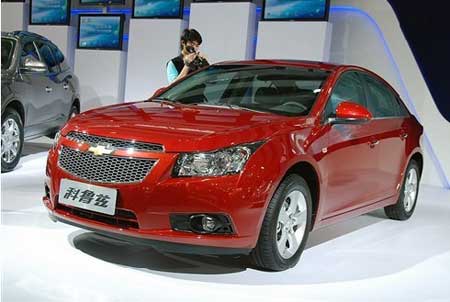
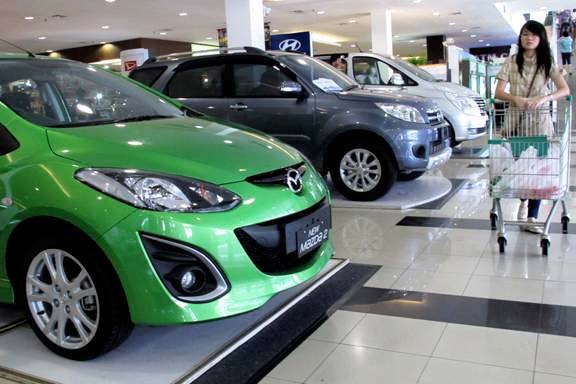

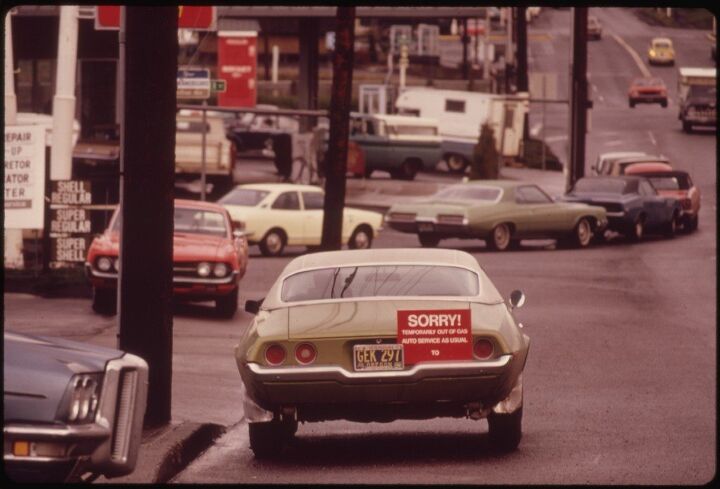











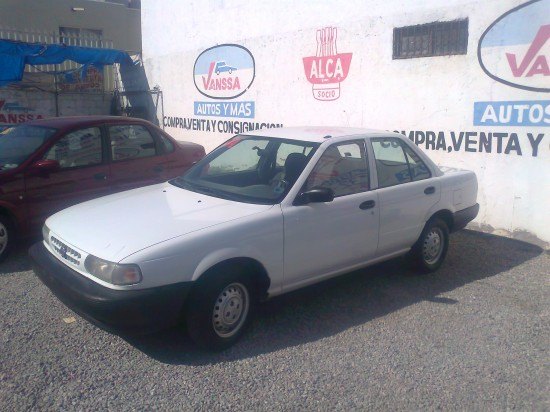
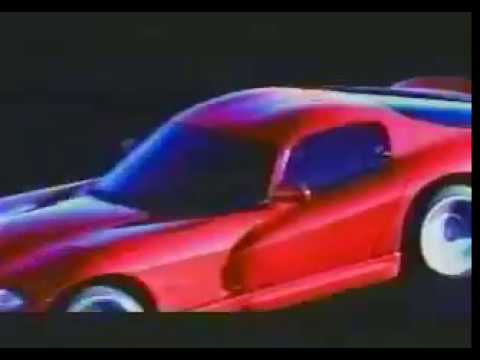

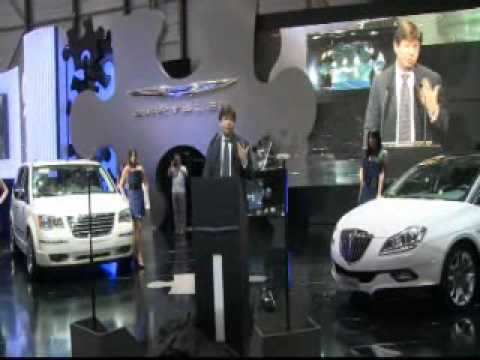

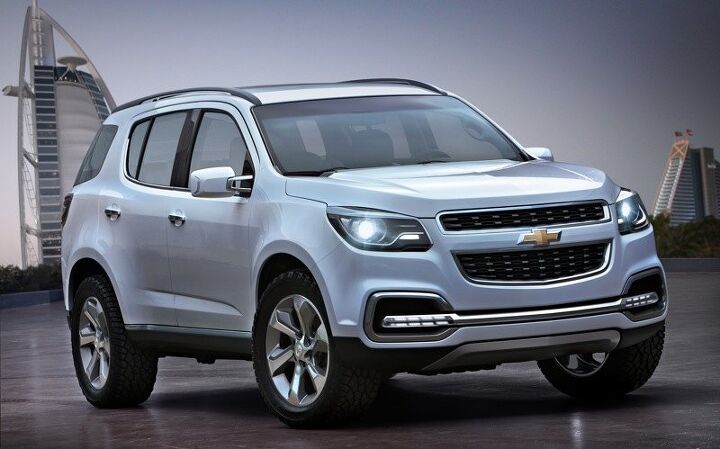




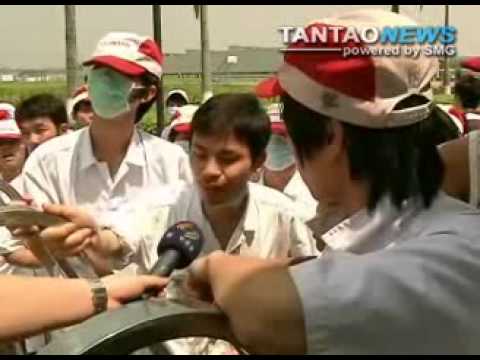



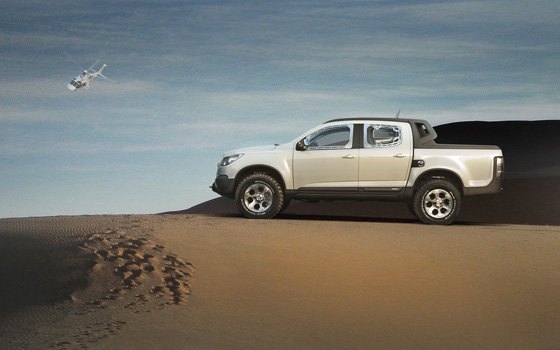
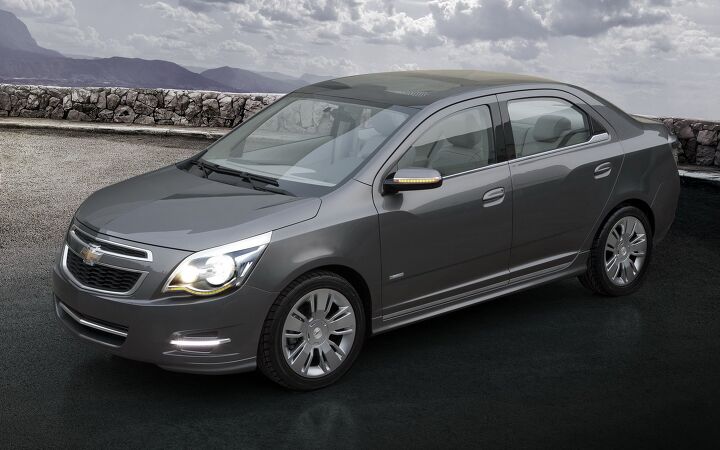













Recent Comments